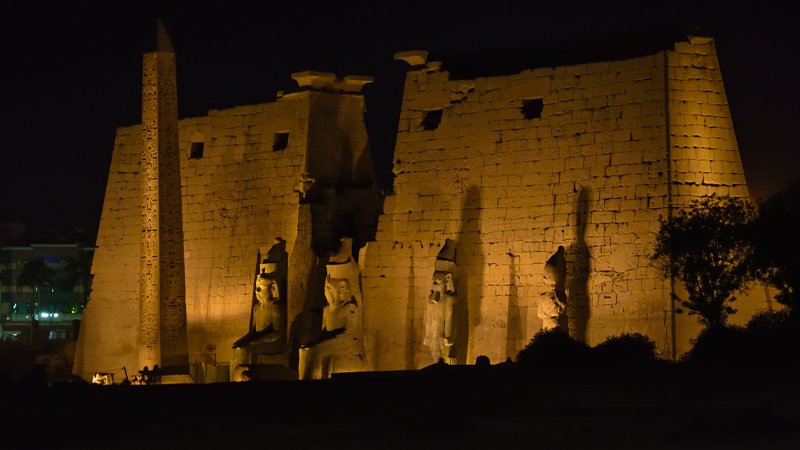The sheer grandeur of Luxor Temple’s architecture is a sight to behold. Its façade is adorned with colossal statues, intricate carvings, and towering obelisks, all meticulously crafted to honor the gods and commemorate significant events. The temple’s design, with its monumental pylon entrance, expansive courts, and sacred shrines, reflects the magnificence of ancient Egyptian temple construction. Luxor Temple is located on the eastern bank of the Luxor Governorate, along with the Karnak Temple.
The Hypostyle Hall: Walking Amongst the Pillars
The Hypostyle Hall within Luxor Temple is an architectural masterpiece characterized by its forest of towering columns. These colossal pillars, adorned with captivating hieroglyphics and intricate designs, create a mesmerizing play of light and shadow. As you wander through this hall, you can’t help but feel a profound sense of awe and reverence for the craftsmanship of ancient artisans.

Obelisks: Guardians of Time
Guarding the entrance of the Temple are its iconic obelisks. These towering stone structures, often over 20 meters tall, are architectural marvels. They serve as celestial markers, aligning with the sun’s movement and casting their shadows in precise patterns on significant dates. The obelisks are a testament to the advanced astronomical knowledge possessed by the ancient Egyptians.
Historical Significance: Chronicles of a Bygone Era
Luxor Temple witnessed numerous historical events that shaped Egypt’s destiny. From triumphant military processions to elaborate religious ceremonies, the temple’s walls have borne witness to the ebb and flow of civilization. One of the most remarkable inscriptions in the temple commemorates the Opet Festival, an annual event celebrating the rejuvenation of the pharaoh’s divine power.
Religious and Symbolic Meanings: Unveiling Ancient Beliefs
Luxor Temple was a vital religious center where the pharaohs and priests paid homage to the gods and performed intricate rituals. The temple layout was designed to align with cosmic principles, symbolizing the connection between the earthly and divine realms. The annual Opet Festival, during which the sacred statues of the gods were carried in a grand procession, reinforced the temple’s significance as a nexus of spiritual energy.
Luxor Temple’s Enduring Legacy
Despite the passage of millennia, Temple’s influence and significance endure. Its architectural elegance, historical inscriptions, and religious symbolism continue to captivate archaeologists, historians, and visitors alike. As you walk in the footsteps of ancient Egyptians within the temple’s hallowed halls, you can’t help but be transported back in time, gaining insights into this remarkable civilization’s profound beliefs and achievements.

FAQs
How old is Luxor Temple?
It was dated back to the 14th century BCE, over 3,000 years old.
Can visitors explore the interior of the Temple?
Yes, visitors are welcome to explore the temple’s interior, including its awe-inspiring Hypostyle Hall and sacred shrines.
What is the significance of the Opet Festival?
The Opet Festival celebrated the pharaoh’s divine power and rejuvenation, emphasizing the close relationship between the earthly ruler and the gods.
How were the obelisks at Luxor Temple erected?
The obelisks were carved from single stone blocks and erected using sophisticated engineering techniques, including ramps and pulleys.
Are there any inscriptions of historical events at Luxor Temple?
It contains inscriptions depicting various historical events, including military processions and religious ceremonies.
Can I witness the alignment of obelisk shadows during my visit?
If you time your visit correctly, you can witness the remarkable alignment of obelisk shadows, a testament to ancient Egyptian astronomical knowledge.
Conclusion
Luxor Temple is a living testament to ancient Egypt’s ingenuity, spirituality, and artistic brilliance. Its magnificent architecture, intricate carvings, and historical inscriptions provide a window into a civilization that flourished thousands of years ago. As you explore the halls and courtyards of Luxor Temple, you’ll not only admire its physical beauty but also connect with the rich tapestry of human history woven within its walls.



